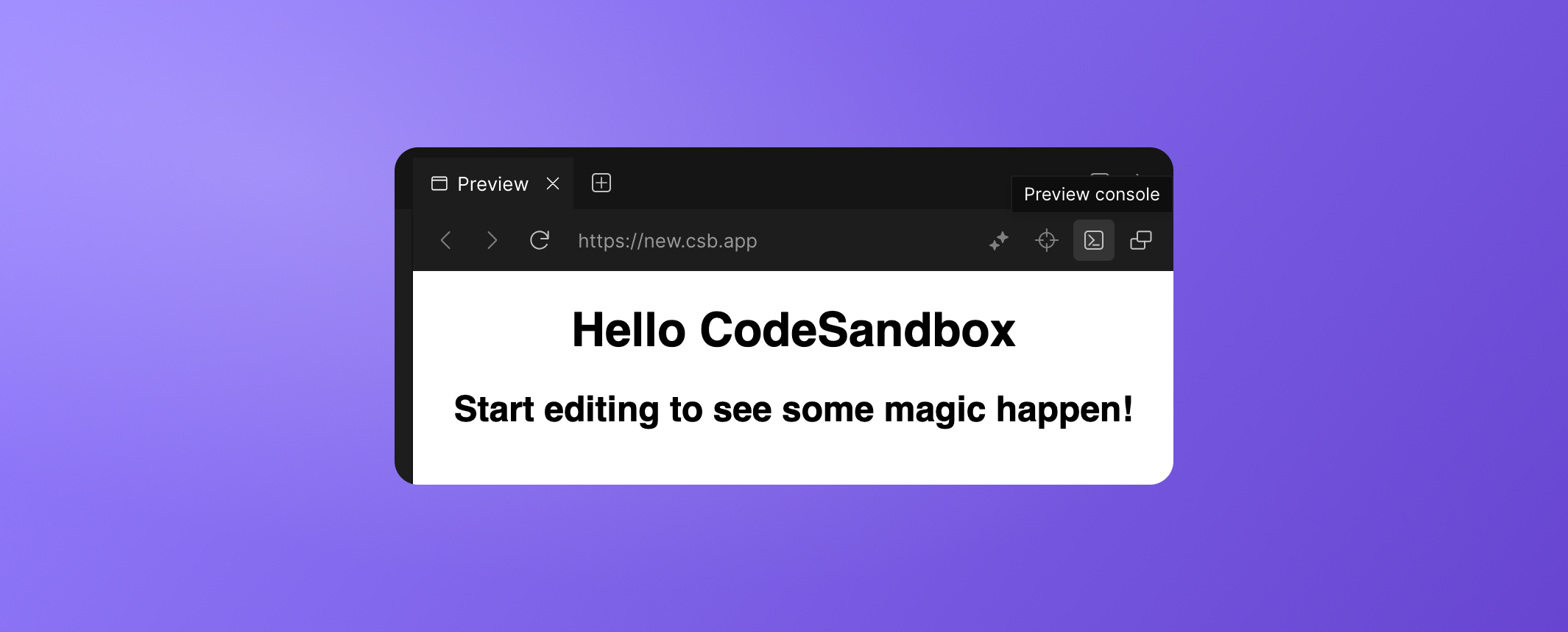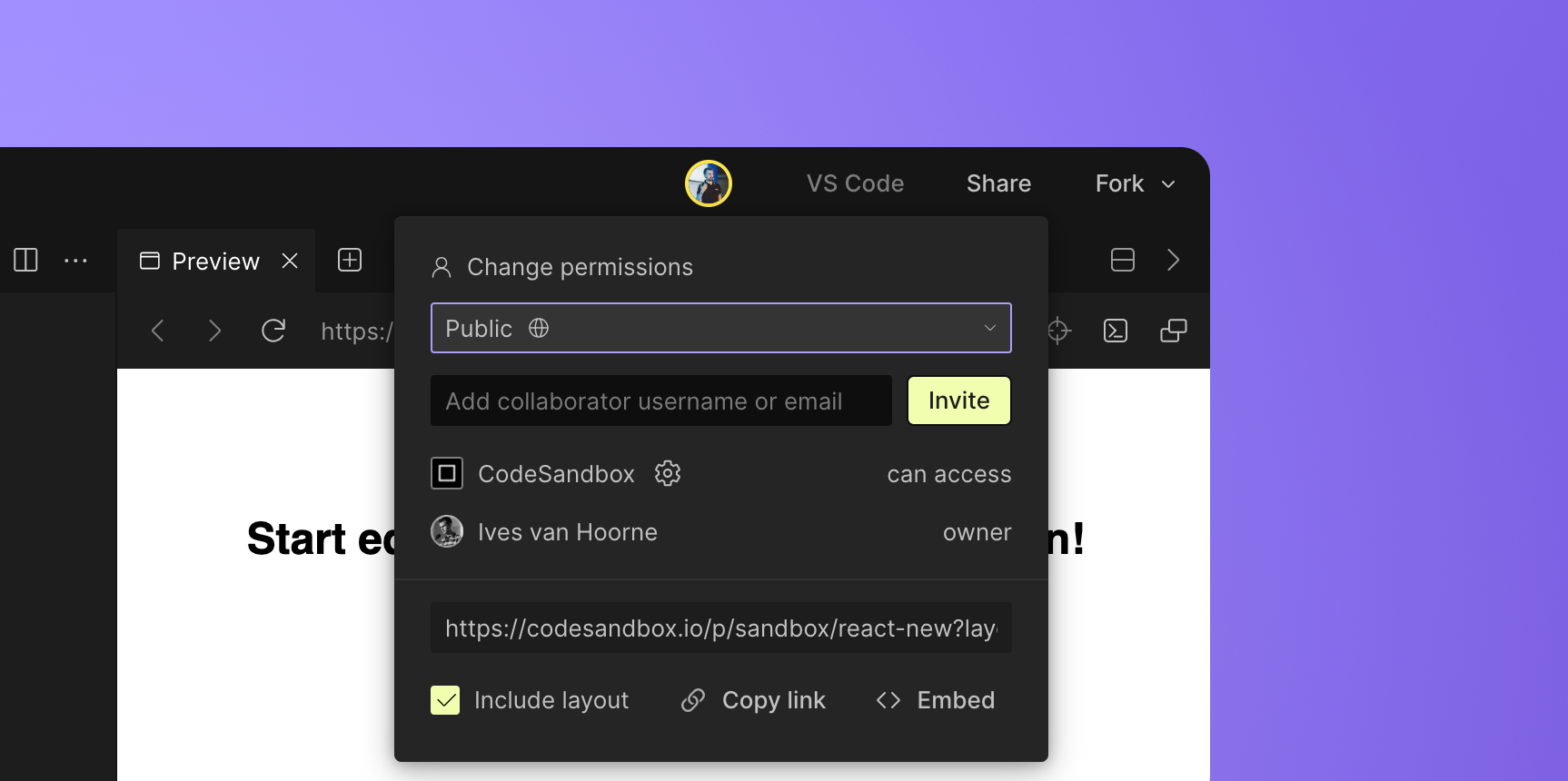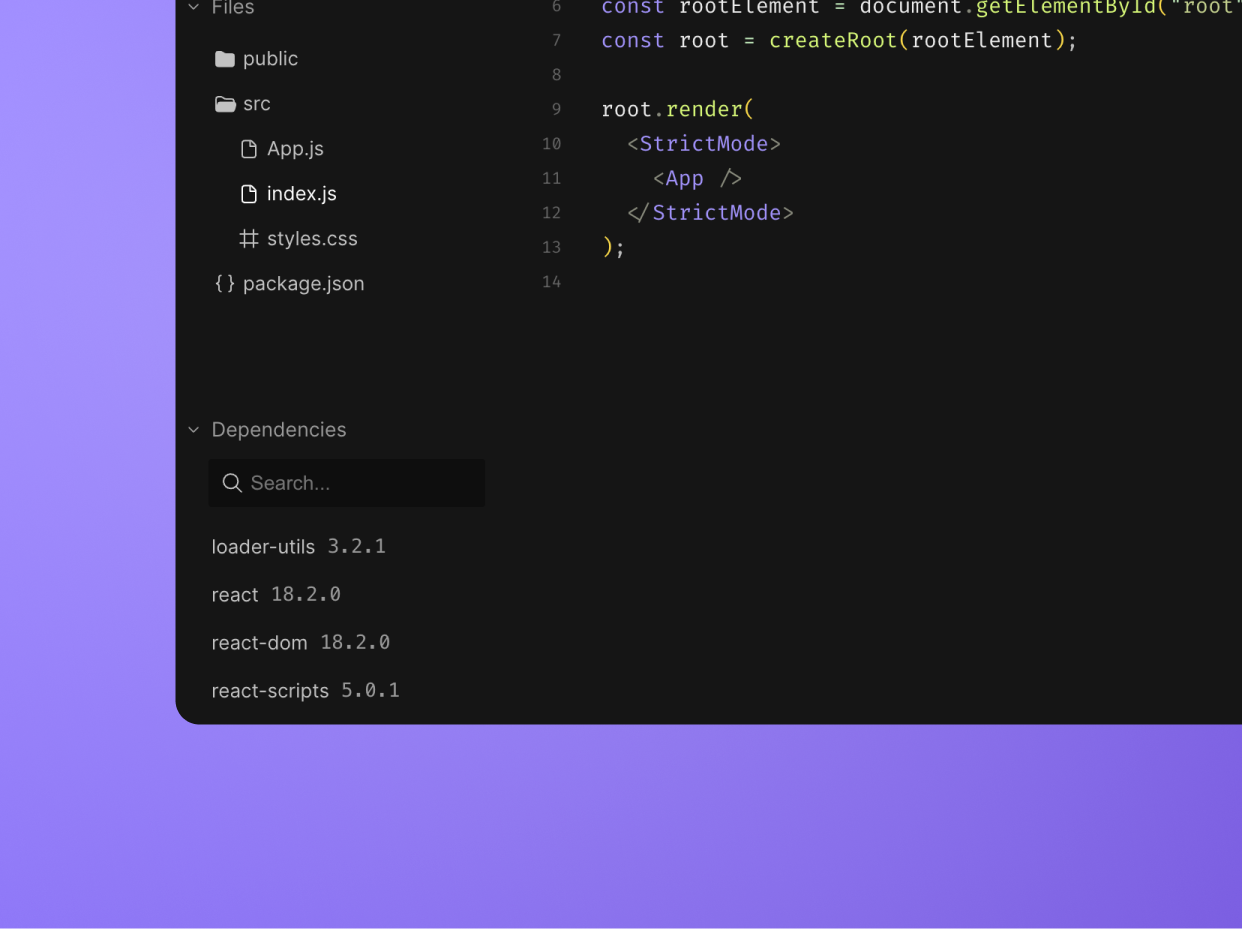Sandbox Features
Browser Sandboxes run on the browser to provide a lightweight experience for front-end code.
In our latest editor, we have carried forward the spirit of speed and simplicity that has powered the rapid sandbox development while preserving the same core features. Other favorite features like live sessions, VS Code and terminals will only be available on VM Sandboxes.
Previews
Previews in sandboxes appear automatically in your devtools and sync to the changes you make in the code.
Console
Browser devtools are available for every preview. This means you get access to the browser console inside the editor. You can toggle it on/off from the preview console button.

Embeds
What is an Embed?
An embed enables you to include a running sandbox in your documentation, blog post, or website.
Browser sandbox embeds can be achieved using an iFrame or with Embedly support, which works for platforms like Medium, Reddit, Trello, and Notion. You can customize the embed to show just the code, the preview, or both at the same time.
Generate an Embed URL
You can generate a URL to embed by clicking 'Embed' in the header on the editor and selecting the options you want to have enabled.

Embed on Medium
You can easily embed on Medium by taking your sandbox URL (like https://codesandbox.io/s/new (opens in a new tab)) and pasting it in a Medium article. It should automatically become an embed after you press enter.
Embed Options
The options shown in the embed modal are not all options available. We need a new UI for the share model to reflect these options, in the meantime you can find them here.
| Option | Description | Values | Default |
|---|---|---|---|
autoresize | Automatically resize the embed to the content (only works on Medium). | 0/1 | 0 |
codemirror | Use CodeMirror editor instead of Monaco (decreases embed size significantly). | 0/1 | 0 |
editorsize | Size in percentage of editor. | number | 50 |
eslint | Use eslint (increases embed size significantly). | 0/1 | 0 |
expanddevtools | Start with the devtools (console) open. | 0/1 | 0 |
hidedevtools | Hide the DevTools bar of the preview. | 0/1 | 0 |
fontsize | Font size of editor | number (in px) | 14 |
forcerefresh | Force a full refresh of frame after every edit. | 0/1 | 0 |
hidenavigation | Hide the navigation bar of the preview. | 0/1 | 0 |
highlights | Which lines to highlight (only works in CodeMirror) | comma separated list of line numbers | |
initialpath | Which url to initially load in address bar | string | / |
module | Which module to open by default. Multiple paths comma separated are allowed, in that case we show them as tabs | path to module (starting with /) | entry path |
moduleview | Evaluate the file that is open in the editor. | 0/1 | 0 |
previewwindow | Which preview window to open by default | console/tests/browser | browser |
runonclick | Only load the preview when the user says so. | 0/1 | 0 |
view | Which view to open by default | editor/split/preview | split, preview for small screens |
theme | Which theme to show for the embed | dark/light | dark |
Example Embeds
These are some examples of embeds, based on their properties.
Smallest Embed
This embed is focused on being as light as possible:
https://codesandbox.io/embed/new?codemirror=1Use this code to embed:
<iframe
src="https://codesandbox.io/embed/new?codemirror=1"
style="width:100%; height:500px; border:0; border-radius: 4px; overflow:hidden;"
allow="accelerometer; ambient-light-sensor; camera; encrypted-media; geolocation; gyroscope; hid; microphone; midi; payment; usb; vr; xr-spatial-tracking"
sandbox="allow-forms allow-modals allow-popups allow-presentation allow-same-origin allow-scripts"
></iframe>That will give to a result like this:
Code Example Embed
You can also use CodeSandbox to show code examples, with highlighted lines. This is only supported with the CodeMirror editor currently:
https://codesandbox.io/embed/new?codemirror=1&highlights=11,12,13,14Use this code to embed:
<iframe
src="https://codesandbox.io/embed/new?codemirror=1&highlights=6,7,8,9"
style="width:100%; height:500px; border:0; border-radius: 4px; overflow:hidden;"
allow="accelerometer; ambient-light-sensor; camera; encrypted-media; geolocation; gyroscope; hid; microphone; midi; payment; usb; vr; xr-spatial-tracking"
sandbox="allow-forms allow-modals allow-popups allow-presentation allow-same-origin allow-scripts"
></iframe>That will give to a result like this:
CodeSandbox has a separate application for the embed. This application is
specifically built to be as small as possible. If you replace s in the URL of
a sandbox to embed you have the embed version of the sandbox. Example:
https://codesandbox.io/s/new (opens in a new tab) => https://codesandbox.io/embed/new (opens in a new tab). Notice that
the embed doesn't have all of the features of the full editor.
Dependency Picker
 Easily add, update and remove dependencies with this tool.
Easily add, update and remove dependencies with this tool.